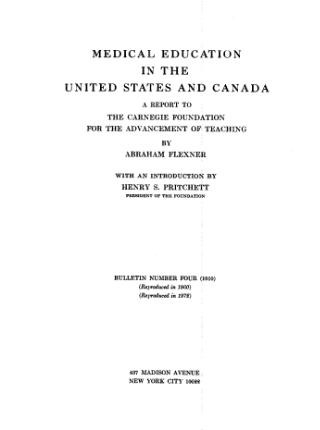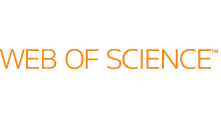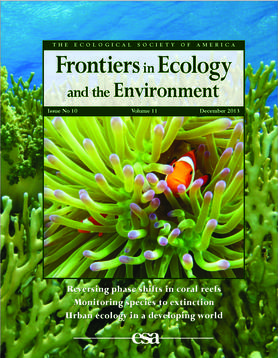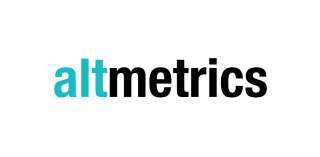A public health journal is a scientific journal devoted to the field of public health, including epidemiology, biostatistics, and health care. Public health journals, like most scientific journals, are peer-reviewed. Public health journals are commonly published by health organizations and societies, such as the Bulletin of the World Health Organization or the Journal of Epidemiology and Community Health. Many others are published by a handful of large publishing corporations that includes Elsevier, Wolters Kluwer, Wiley-Blackwell, Springer Science+Business Media, and Informa, each of which has many imprints. Many societies partner with such corporations to handle the work of producing their journals.
The impact factor (IF) or journal impact factor (JIF) of an academic journal is a scientometric index calculated by Clarivate that reflects the yearly mean number of citations of articles published in the last two years in a given journal, as indexed by Clarivate's Web of Science.

The Flexner Report is a book-length landmark report of medical education in the United States and Canada, written by Abraham Flexner and published in 1910 under the aegis of the Carnegie Foundation. Many aspects of the present-day American medical profession stem from the Flexner Report and its aftermath. The Flexner report has been criticized for introducing policies that encouraged systemic racism.
Science & Society: A Journal of Marxist Thought and Analysis is a peer-reviewed academic journal of Marxist scholarship. It covers economics, philosophy of science, historiography, women's studies, literature, the arts, and other social science disciplines from a Marxist point of view. As well as covering social and political theory, it includes first-order historical research.
Citation impact is a measure of how many times an academic journal article or book or author is cited by other articles, books or authors. Citation counts are interpreted as measures of the impact or influence of academic work and have given rise to the field of bibliometrics or scientometrics, specializing in the study of patterns of academic impact through citation analysis. The journal impact factor, the two-year average ratio of citations to articles published, is a measure of the importance of journals. It is used by academic institutions in decisions about academic tenure, promotion and hiring, and hence also used by authors in deciding which journal to publish in. Citation-like measures are also used in other fields that do ranking, such as Google's PageRank algorithm, software metrics, college and university rankings, and business performance indicators.
The h-index is an author-level metric that measures both the productivity and citation impact of the publications, initially used for an individual scientist or scholar. The h-index correlates with obvious success indicators such as winning the Nobel Prize, being accepted for research fellowships and holding positions at top universities. The index is based on the set of the scientist's most cited papers and the number of citations that they have received in other publications. The index has more recently been applied to the productivity and impact of a scholarly journal as well as a group of scientists, such as a department or university or country. The index was suggested in 2005 by Jorge E. Hirsch, a physicist at UC San Diego, as a tool for determining theoretical physicists' relative quality and is sometimes called the Hirsch index or Hirsch number.

Open science is the movement to make scientific research and its dissemination accessible to all levels of society, amateur or professional. Open science is transparent and accessible knowledge that is shared and developed through collaborative networks. It encompasses practices such as publishing open research, campaigning for open access, encouraging scientists to practice open-notebook science, broader dissemination and engagement in science and generally making it easier to publish, access and communicate scientific knowledge.

Nova Science Publishers is an academic publisher of books, encyclopedias, handbooks, e-books and journals, based in Hauppauge, New York. It was founded in 1985. A prolific publisher of books, Nova has received criticism from librarians for not always subjecting its publications to academic peer review and for republishing public domain book chapters and freely-accessible government publications at high prices.
Journal ranking is widely used in academic circles in the evaluation of an academic journal's impact and quality. Journal rankings are intended to reflect the place of a journal within its field, the relative difficulty of being published in that journal, and the prestige associated with it. They have been introduced as official research evaluation tools in several countries.

The Web of Science is a paid-access platform that provides access to multiple databases that provide reference and citation data from academic journals, conference proceedings, and other documents in various academic disciplines. It was originally produced by the Institute for Scientific Information. It is currently owned by Clarivate.

An academic discipline or academic field is a subdivision of knowledge that is taught and researched at the college or university level. Disciplines are defined and recognized by the academic journals in which research is published, and the learned societies and academic departments or faculties within colleges and universities to which their practitioners belong. Academic disciplines are conventionally divided into the humanities, including language, art and cultural studies, and the scientific disciplines, such as physics, chemistry, and biology; the social sciences are sometimes considered a third category.

The Journal of Forensic Sciences (JFS) is a bimonthly peer-reviewed scientific journal is the official publication of the American Academy of Forensic Sciences, published by Wiley-Blackwell. It covers all aspects of forensic science. The mission of the JFS is to advance forensic science research, education and practice by publishing peer-reviewed manuscripts of the highest quality. These publications will strengthen the scientific foundation of forensic science in legal and regulatory communities around the world.

Frontiers in Ecology and the Environment is a peer-reviewed scientific journal issued ten times per year, and consists of peer-reviewed, synthetic review articles on all aspects of ecology, the environment, and related disciplines, as well as short, high-impact research communications of broad interdisciplinary appeal. Additional features include editorials, commentaries, a letters section, Life Lines, job ads, and special columns. It is published by Wiley-Blackwell on behalf of the Ecological Society of America (ESA). According to the Journal Citation Reports, the journal has a 2021 impact factor of 13.780, ranking it eleventh out of 279 journals in the category "Environmental Sciences" and fourth out of 174 journals in the category "Ecology".

Medical Care Research and Review is a peer-reviewed academic journal that covers the field of health care. The editor-in-chief is Thomas D'Aunno. It was established in 1944 and is currently published by SAGE Publishing.
Coercive citation is an academic publishing practice in which an editor of a scientific or academic journal forces an author to add spurious citations to an article before the journal will agree to publish it. This is done to inflate the journal's impact factor, thus artificially boosting the journal's scientific reputation. Manipulation of impact factors and self-citation has long been frowned upon in academic circles; however, the results of a 2012 survey indicate that about 20% of academics working in economics, sociology, psychology, and multiple business disciplines have experienced coercive citation. Individual cases have also been reported in other disciplines.

In scholarly and scientific publishing, altmetrics are non-traditional bibliometrics proposed as an alternative or complement to more traditional citation impact metrics, such as impact factor and h-index. The term altmetrics was proposed in 2010, as a generalization of article level metrics, and has its roots in the #altmetrics hashtag. Although altmetrics are often thought of as metrics about articles, they can be applied to people, journals, books, data sets, presentations, videos, source code repositories, web pages, etc.
Regulatory Toxicology and Pharmacology is a monthly peer-reviewed scientific journal which covers legal aspects of toxicological and pharmacological regulations. It is published by Elsevier on behalf of the International Society of Regulatory Toxicology & Pharmacology. The current co-editors-in-chief are Lesa L. Aylward and Martin van den Berg.
Author-level metrics are citation metrics that measure the bibliometric impact of individual authors, researchers, academics, and scholars. Many metrics have been developed that take into account varying numbers of factors.
The Journal of Biological Education is a quarterly peer-reviewed academic journal covering biology education. It was established in 1967, is owned by the Royal Society of Biology, and is published by Routledge. The editor-in-chief is Ian Kinchin. According to the Journal Citation Reports, the journal has a 2014 impact factor of 0.324, ranking it 32nd out of 37 journals in the category "Education, Scientific Disciplines".








